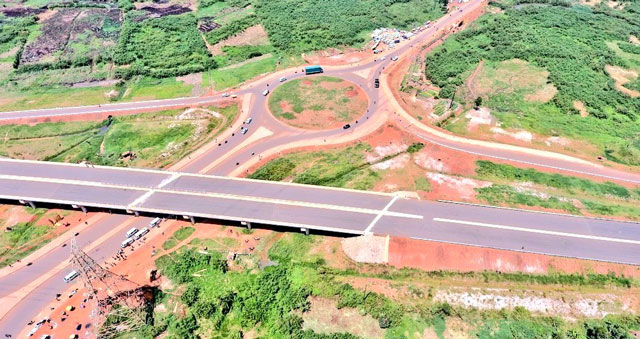
****
Top six sector allocations
Winners: Works and transport sector will have its budget allocation increased from Shs4.7tn to Shs5.3tn; interest payments from Shs2.5tn to Shs2.9tn, energy and mineral development from Shs2.4tn to Shs2.6tn.
Losers: Education budget is reduced from Shs2.7tn to Shs2.6tn; health from Shs2.3tn to Shs2.2tn and security from Shs2.0tn to Shs1.9tn.
****
Debt burden queries
The country’s total public debt stock both domestic and external as at the end of 2018 stood at US$10.7bn (equivalent to Shs41.3tn). This is equivalent to 41.5% of the GDP of which 13.3% is domestic while 28.2% is external.
While this is still below the 50% threshold, some analysts say it worries given that it can exceed the 50% limit if government implements other debt financing of huge projects such as Standard Gauge Railway, new roads and the planned oil pipeline.
The good news for the private sector is that the government plans to reduce its domestic borrowing from Shs1.7tn to Shs534.9bn – a welcome move aimed at not crowding out the private sector in the credit market.
Twinoburyo and the Makerere University based Economic Policy Research Centre senior research fellow, Ibra Kasirye told The Independent in separate interviews that the new budget should be thought out carefully in terms of avoiding debt accumulation and medium term budget theme of ‘industrialization for job creation and shared prosperity’.
“Allocation and operational efficiency is critical in this process,” Twinoburyo said. “We seem to be good at budgeting on paper but not at implementation,” he said.
On borrowing, Twinoburyo said the government needs to take into account the changing cost of borrowing brought about by interest rate hikes and the volatile exchange rate.
He said the interest payments annually are fast approaching 3% of GDP (nearly 20% of domestic revenue), which is one of the highest. This implies that only 80% of the revenue is being invested in other 16 sectors amidst other risks.
“Utilisation of loans is marred with cost and time overruns…feasibility of projects is lacking in most cases,” he says.
Overall, he adds that the medium term debt risks are pronounced – and the average weighted interest rate on debt is higher than the rate at which the economy is growing suggesting an eventual unsustainable trend if the pace of debt growth is not contained in the medium term as well sequenced in tandem with capacity to efficiently absorb loans.
The projected interest rate – growth differential up to 2025 is expected to remain over 5% per annum.
While data on debt exists, Twinoburyo says, there is not holistic understanding of how much government owns in terms of the assets which provide a buffer to mitigate debt crisis.
In terms of capacity to raise revenue, Twinoburyo says given that 90% of revenue is coming from the top 1,000 taxpayers, taxes are collected from a relatively narrow base.
At sector level, agriculture which accounts for quarter of GDP contributes less than 1% of tax revenue, while the service sector which accounts for half the annual GDP contributes two thirds of the tax collections and the remaining is contributed by industry sector.
This scenario reiterates the fact that informality is a major constraint but also could lend credence to the fact that evasion increases with self-employment, both at the individual level and beyond.
From the policy and administration front; digitalisation of the informal sector and key economic activities as well as establishing a transparent and stringent mechanisms for tax expenditures will deliver quick wins, Twinoburyo said.
He adds that establishing a strong culture of compliance, improving the tax structure, and enhancing the productivity and capacity of the tax administration too are critical to attaining Uganda’s revenue objectives.
On the other hand, Kasirye, says though it is bad news to reduce expenditure for social sectors, it is also a good idea of paying off current debt to avoid their accumulation.
He says debt repayment protects government from becoming uncreditworthy, and borrowing at much higher rates.
Kasirye supports the idea of hiking revenue collection targets domestically for URA as long as projections are in line with anticipated performance of the economy.
“I believe that they (government) think they will have a larger port to collect taxes in the new financial year,” Kasirye said.
Beyond debt, another item to watch is the creation of a Youth Livelihood Program vote in State House of Shs130bn in 2019/2020 which CSBAG’s Mukunda says should be handled carefully given that the President’s office is prone to compromising politically such initiatives because of limited public and parliamentary scrutiny.
Going forward, Mukunda says that as the country approaches the 2020 final year of the NDPII, the middle income status targets appear far in the horizon, signaling the need for prudent fiscal management with realistic targets to achieve the aspirations.
 The Independent Uganda: You get the Truth we Pay the Price
The Independent Uganda: You get the Truth we Pay the Price



